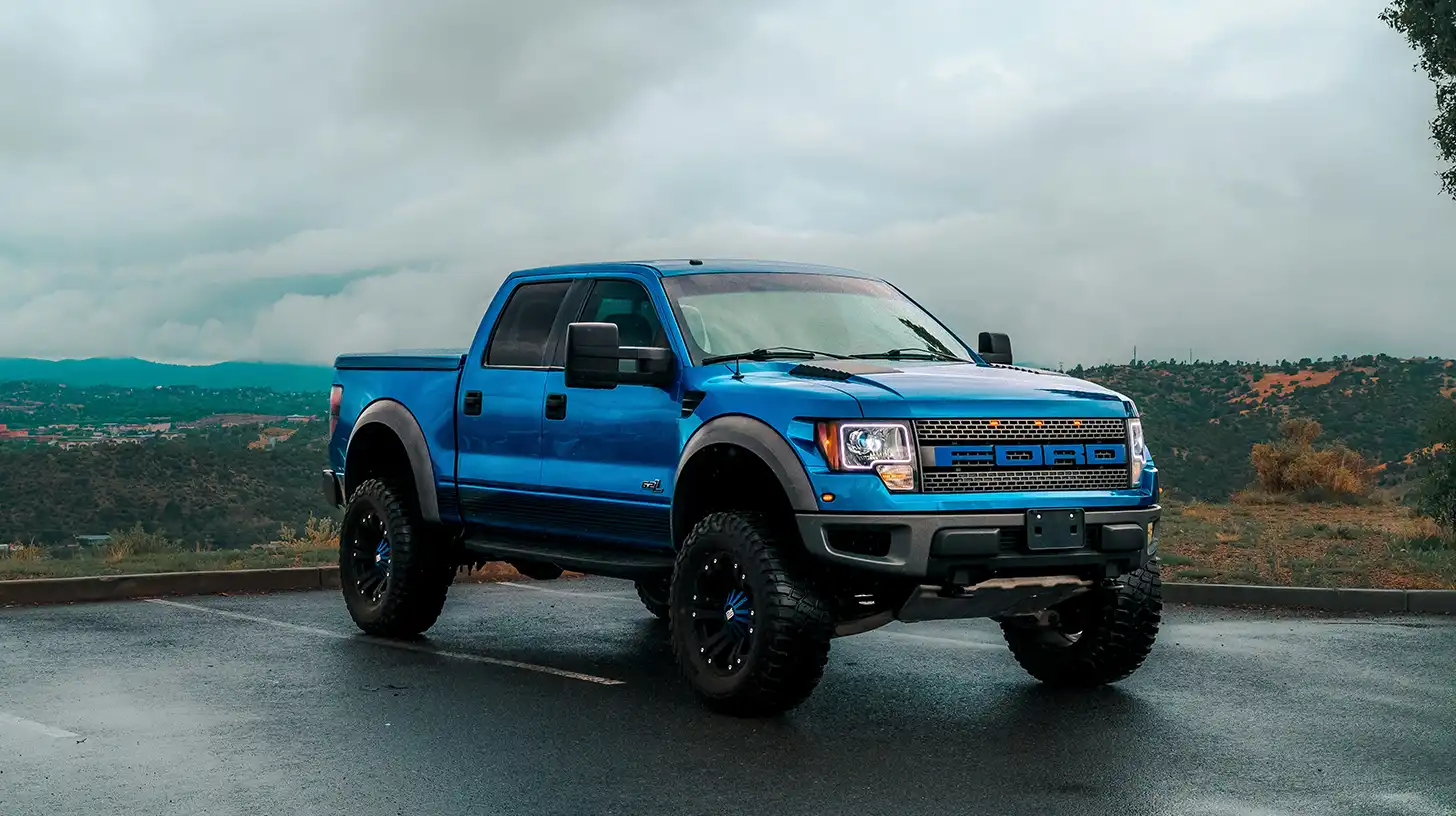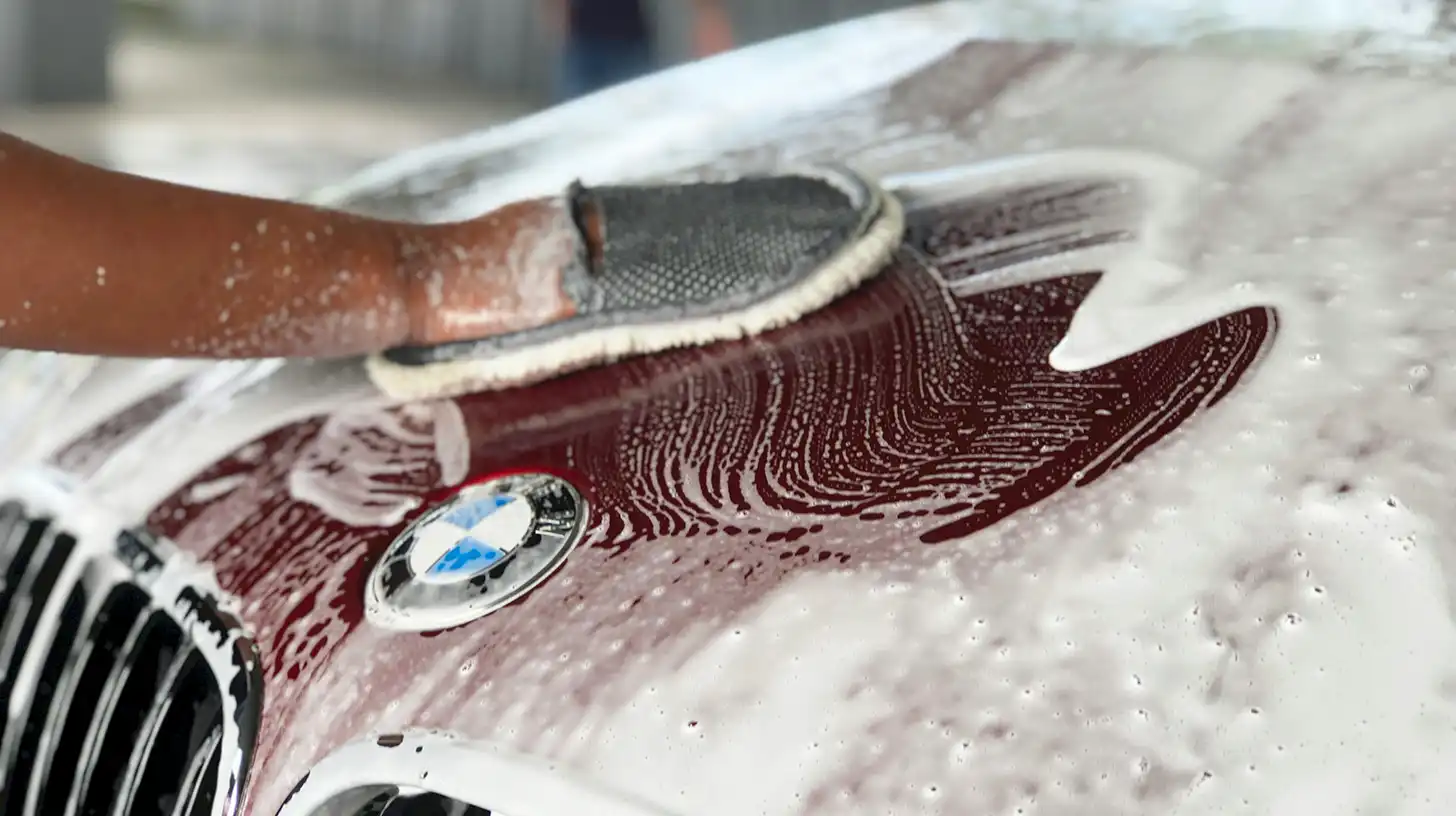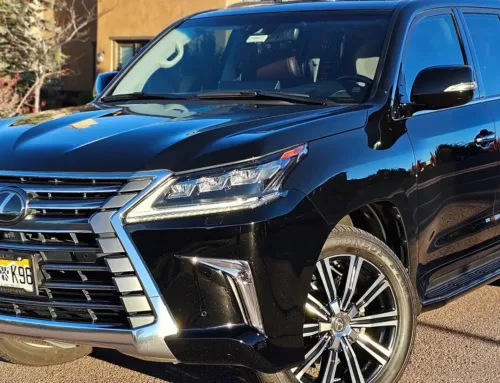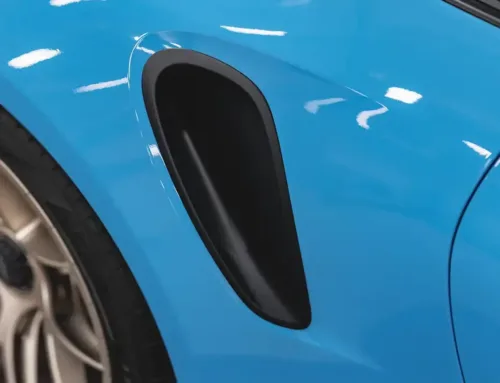Living in Briargate means you understand the value of protecting your investments. Your vehicle faces Colorado’s intense UV rays, sudden summer hailstorms, and the winter road treatments along Powers Boulevard every day. After 20+ years of working with luxury vehicles—from dealership lots to private collections—we’ve seen firsthand how ceramic coating transforms not just how a car looks, but how owners feel about their vehicles. At Springs Detailing, we bring that same level of precision and care that luxury dealerships demand to Briargate residents who refuse to settle for “good enough.”

Key Takeaways
- XPEL ceramic coating provides 4-8 years of superior paint protection against Colorado’s harsh weather conditions
- Proper surface preparation and paint correction are essential for optimal ceramic coating performance
- Investment in quality ceramic coating saves money long-term by reducing maintenance costs and preserving vehicle value
- Professional application ensures warranty protection and eliminates the risk of permanent paint damage
- Briargate’s location experiences unique environmental challenges that make ceramic coating especially valuable
Table of Contents
- Why Briargate Vehicles Need Extra Protection
- The Real Science Behind Professional Ceramic Coating
- Our Process: What Two Decades of Experience Looks Like
- Understanding the Investment: Cost vs. Value
- Maintaining Your Ceramic Coating in Colorado Springs
- Common Misconceptions About Ceramic Coating
- Making the Right Choice for Your Vehicle
Why Briargate Vehicles Need Extra Protection

Drive down Chapel Hills Boulevard any sunny afternoon, and you’ll notice something—the cars here aren’t just transportation. They’re investments, statements, and for many of us, a source of pride. Living in North Colorado Springs, particularly in neighborhoods like Briargate, Cordera, and Pine Creek, means dealing with unique environmental challenges that can quickly diminish your vehicle’s appearance.
The elevation—over 6,000 feet—means UV radiation hits your paint harder here than it would in Denver. According to the National Center for Atmospheric Research, UV exposure increases by approximately 4% for every 1,000 feet of elevation gain. That beautiful Colorado sunshine you enjoy while shopping at Chapel Hills Mall or walking the trails at Ute Valley Park? It’s slowly oxidizing your clear coat.
But here’s what really gets overlooked—mag chloride. Every winter, as you navigate Academy Boulevard or head up to Monument, your vehicle encounters this corrosive de-icing agent. It’s effective at keeping roads safe, but it’s brutal on unprotected paint and undercarriage components. It’s not uncommon to see paint that looked perfect in October showing micro-etching and dulling by March, simply from winter driving.
Real Science Behind Professional Ceramic Coating

After two decades in paint correction and protection, I can tell you that ceramic coating isn’t magic—it’s chemistry. The coating forms a semi-permanent bond with your vehicle’s clear coat, creating a protective layer that’s measured in nanometers but provides years of defense.
The key ingredient is Silicon Dioxide (SiO2), which creates what we call a “sacrificial layer.” This isn’t marketing speak—it’s a measurable barrier that takes the abuse so your paint doesn’t have to. When properly applied, quality ceramic coatings can achieve a hardness rating of 9H on the pencil hardness scale. To put that in perspective, your factory clear coat typically measures around 2H to 4H.
What sets professional-grade ceramic coatings, such as XPEL, apart from retail products isn’t just the concentration of active ingredients—it’s the application process itself. Temperature, humidity, surface preparation, and curing conditions all affect the final result. Here in Colorado Springs, with our dry climate and temperature swings, timing and environment control become critical. Our shop maintains controlled conditions year-round because we’ve learned that what works in humid climates fails here.
The hydrophobic properties—that water-beading effect everyone loves—actually serve a practical purpose beyond aesthetics. Water sheets off instead of pooling, which means contaminants have less time to bond with your paint. During those surprise afternoon thunderstorms that roll through Briargate in summer, your car essentially becomes self-cleaning.
Our Process: 20+ Years of Precision

When you bring your vehicle to us, whether you’re coming from Flying Horse or downtown near Palmer Park, the process begins long before any coating touches your paint. Every car tells a story through its imperfections—swirl marks from automatic washes, water spots from sprinklers at Pine Creek Golf Club, or scratches from loading groceries at King Soopers.
The inspection phase isn’t just a quick walk-around. We use specialized lighting that reveals defects invisible in natural light. Using a paint thickness gauge, we measure your clear coat at multiple points. This tells us exactly how much correction we can safely perform. Some shops skip this step, but after years of fixing other shops’ mistakes, we know better.
Paint correction is where craftsmanship matters most. It’s not about being aggressive—it’s about being precise. We typically perform a two-stage correction process: cutting to remove defects, then polishing to restore clarity. The goal isn’t perfection at any cost; it’s achieving the best possible finish while preserving your clear coat for years to come.
Following paint correction (if needed), ceramic coating is applied panel by panel, with specific flash times between sections. Rush this process, and you get high spots that require aggressive polishing to remove. Take too long, and the coating won’t level properly.
Curing is the final critical phase. While some coatings claim to be “instant,” true chemical bonding takes time. We keep your vehicle in controlled conditions for several hours post-application. The coating continues curing for up to 30 days, which is why we provide specific care instructions for that period.
Understanding the Investment: Cost vs. Value

Let’s address what everyone’s thinking—ceramic coating isn’t cheap. Professional application in Colorado Springs typically ranges from $1,000 to $3,000 depending on vehicle size, paint condition, and coating selection. That’s a significant investment, especially compared to the $50 “ceramic spray” at the auto parts store.
Consider depreciation. Several independent automotive sites cite data that paint damage, poor exterior condition, or visible blemishes can reduce value by “up to 10 %” (or similar). On a $40,000 vehicle, maintaining showroom paint quality could mean an extra $4,000 at trade-in. Suddenly, that ceramic coating investment looks different.
“Springs Detailing did an excellent job with paint correction and ceramic coating on my vehicle! Also very friendly and good communication. I will use their services again.” ~ D. Urban
For Briargate residents who garage their vehicles and maintain them properly, we typically see coatings last several years. Compare that to wax (2-3 months) or sealants (6 months), and the math becomes clear. You’re not just buying protection—you’re buying time. Time not spent detailing every month. Time not worrying about that tree sap from Cottonwood Creek Park. Time enjoying your vehicle instead of maintaining it.
Further Reading: How Much Does Ceramic Coating Actually Cost?
Maintaining Your Ceramic Coating in CO Springs

The biggest misconception about ceramic coating? That it’s maintenance-free. While it dramatically reduces maintenance, proper care ensures maximum longevity. The good news is that maintenance becomes simpler and less frequent.
Washing technique matters more than frequency. Those touch-free washes along Research Parkway might seem safe, but their harsh chemicals can degrade ceramic coatings over time. Hand washing with pH-neutral products preserves the coating’s hydrophobic properties. We recommend washing every two weeks during summer and weekly during winter to remove mag chloride buildup.
Colorado’s intense sun requires special attention. While ceramic coating provides excellent UV protection, parking strategies still matter. When possible, choose covered parking at Chapel Hills Mall or the shaded spots at local businesses. It’s not about babying your vehicle—it’s about maximizing your investment.
Decontamination remains important. Even with ceramic coating, iron particles from brake dust and industrial fallout can bond to the surface. Every 6-12 months, a professional decontamination service removes these embedded contaminants without damaging the coating. Think of it as deep cleaning for your car’s skin.
Common Misconceptions About Ceramic Coating
After countless conversations with car owners from Northgate to Fountain, I’ve heard every ceramic coating myth imaginable. Let’s separate fact from fiction with real-world experience.
“Ceramic coating makes your car scratch-proof.” This is perhaps the most damaging myth. Ceramic coating adds hardness, not thickness. It’ll prevent light scratches from automatic brushes or gentle contact, but keys, shopping carts, and improper washing will still cause damage. The coating makes scratches less likely, not impossible.
“All ceramic coatings are the same.” The chemistry varies dramatically between products. Consumer-grade coatings typically contain 1-3% SiO2. Professional formulations can exceed 80% concentration. More importantly, professional coatings include proprietary additives that improve bonding, longevity, and performance in specific climates.
“You can apply it yourself and save money.” I respect the DIY spirit—But ceramic coating isn’t like waxing. Improper application creates high spots that require machine polishing to remove. Get it wrong, and you’re paying for correction plus reapplication. We fix DIY attempts often, and it always costs more than doing it right initially. Cheap is usually expensive!
“Once coated, you never need detailing again.” Ceramic coating is a shield, not a force field. It makes cleaning easier and protects against environmental damage, but it doesn’t eliminate the need for proper care. Bird droppings, bug splatter, and tree sap still require prompt removal to prevent etching through the coating.
Making the Right Choice for Your Vehicle

Not every vehicle needs ceramic coating, and that’s okay. We’ve turned away customers whose needs would be better served by regular waxing or paint protection film. Honesty built our reputation through 20+ years in this industry, and we’re not changing now.
Ceramic coating makes sense if you plan to keep your vehicle more than three years, care about appearance, and want to minimize maintenance time. It’s ideal for Briargate residents with newer vehicles, anyone who parks outside regularly, and enthusiasts who view their cars as more than transportation.
For vehicles with extensive paint damage, correction might exceed coating costs. Sometimes, the smart investment is regular maintenance rather than extensive correction plus coating. We’ll inspect your vehicle and give you honest recommendations, even if it means less revenue for us. That’s the difference between a business transaction and building a relationship.
Consider your lifestyle too. If you’re commuting to Denver regularly, facing I-25 construction zones and their debris, ceramic coating provides valuable protection. If your vehicle mostly travels between Briargate and the Powers corridor for errands, the cost-benefit calculation changes.
Conclusion

Your vehicle is more than metal and glass—it’s freedom, reliability, and often, a significant financial investment. Living in Briargate and greater Colorado Springs means dealing with environmental challenges that can quickly diminish your vehicle’s appearance and value. Professional ceramic coating isn’t just about maintaining that new-car shine; it’s about protecting your investment with the same attention to detail that luxury dealerships demand.
After two decades perfecting paint correction and protection techniques, we’ve learned that every vehicle has potential. Whether you drive a daily commuter or a weekend showpiece, the right protection strategy can transform not just how your car looks, but how you feel every time you walk up to it in the King Soopers parking lot or pull into your driveway after a long day.
The question isn’t whether ceramic coating works—science and experience prove it does. The question is whether you’re ready to stop settling for good enough and experience what your vehicle can really look like.
Ready to protect your investment and fall in love with your car again? Call Springs Detailing at (719) 761-5865 or visit our Fillmore location for a free consultation and paint inspection. Because in Colorado Springs, your car deserves protection as exceptional as our 300 days of sunshine.
Further Reading: Ceramic Coating vs PPF: Which Paint Protection is Best?
Frequently Asked Questions
How long does ceramic coating last in Colorado Springs weather?
Professional ceramic coating typically lasts 2-5 years in Colorado Springs (4-8 years with XPEL), depending on the specific product used, application quality, and maintenance routine. Our high-elevation UV exposure and winter mag chloride treatments can affect longevity, but proper maintenance significantly extends coating life. Garage-kept vehicles in Briargate often see coating performance exceed 5 years with annual maintenance services.
Can ceramic coating protect against Colorado hail damage?
Ceramic coating cannot prevent hail damage—no coating can stop the physical impact of ice balls falling from the sky. However, ceramic coating does provide excellent protection against the environmental damage that often follows hail storms, including water spotting, paint etching from storm debris, and contamination from damaged tree limbs. For hail protection, we recommend comprehensive insurance coverage and covered parking when possible.
What’s the difference between ceramic coating and PPF?
Ceramic coating is a liquid polymer that chemically bonds with your paint, creating a protective layer measured in nanometers. Paint Protection Film (PPF) is a clear urethane film that’s 8-10 mils thick, providing physical protection against rock chips and scratches. Ceramic coating excels at making maintenance easier and protecting against chemical damage, while PPF provides superior impact protection. Many Briargate clients choose PPF for high-impact areas like the hood and bumper, with ceramic coating on the entire vehicle for comprehensive protection.
How much does professional ceramic coating cost in Briargate?
Professional ceramic coating in the Briargate area ranges from $1,000-$3,000 depending on vehicle size, paint condition, and coating selection. This includes proper paint correction, which is essential for optimal results. While this represents a significant investment, consider that maintaining showroom-quality paint through traditional methods costs approximately $800-1,200 annually. Most Colorado Springs residents see return on investment within 18-24 months through reduced maintenance costs and preserved resale value.
Do I need paint correction before ceramic coating?
Paint correction is almost always necessary before ceramic coating application. The coating locks in whatever condition your paint is in, including swirl marks, water spots, and scratches. Even new vehicles from dealerships along Motor City typically have some imperfections from transport and lot washing. Proper correction ensures the coating bonds correctly and that you’re protecting paint that looks its absolute best. Skipping this step is like putting an expensive frame on a wrinkled photograph.



